






powered by SignMyGuestbook.com

| Newest
Older Previous Next Random Contact Profile Host |
blizzard warnings - 13:52 , 03 October 2013 heelerless - 21:32 , 18 August 2013 Red Coat Inn in Fort McLeod - 11:38 , 23 June 2013 rushing into the waters - 09:53 , 21 June 2013 choosing a spot - 17:43 , 27 April 2013 |
line transect preparation
Most of Thursday was spent here.
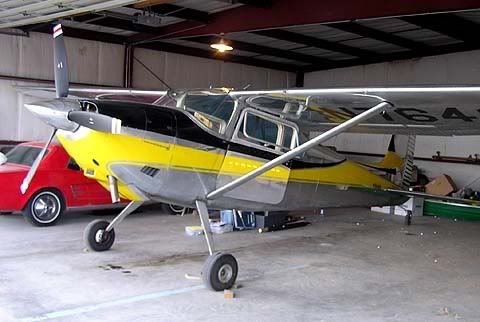
No, not in the plane, silly.
In the hangar.
Our state's resident expert arrived to set the pilot's plane up for our newest technique for estimating pronghorn numbers.
(It works for other things, too. They've used it on walrus, polar bear, elephants, zebra, kangaroo, what have you.)
When you have large, obvious animals scattered about a lot of wide open spaces without much for trees, aerial counting quickly became the means of determining how many critters you got. Starting probably over fifty years ago.
Problem is, you never see them all, and there's no reliable means of estimating how many you missed.
Also takes a tremendous amount of flight time and manpower. Which, when AvGas has hit $4 a gallon like it has in our part of the country, is expensive.
So folks pretty quickly came up with "strip surveys". Instead of flying the entire piece of ground you're interested in, you just fly narrow strips, counting just the animals in the strips alongside your plane. If you keep your plane a known distance above the ground, and keep track of where your strips start and end, you know how much area you covered. With this sample you can estimate the total number in the total area.
For a fifth or less of the flying time.
'Course, you still don't know how many you missed inside your strips.
Now this "new" technique (new as in, the past couple decades or so) assumes you probably miss more and more animals the farther they are from the plane.
Makes sense.
So what you do is fly several strips at once, each spaced farther from the plane. The rate at which your counts drop off in the farthest strips gives you a good idea of what you're missing. (If you didn't miss any, all the strips would come out the same. Never happens.)
To estimate our pronghorn numbers, and estimate our success at seeing the things, we will now be using five strips. You just fly along, and the observer on each side of the plane calls out the pronghorn they see, and which strip they're in.
Problem is, you've got to mark those strips. Aaand know exactly how wide they are on the ground.
The strips are marked by mounting dowels on the wing strut. Six parallel dowels to delineate five strips.
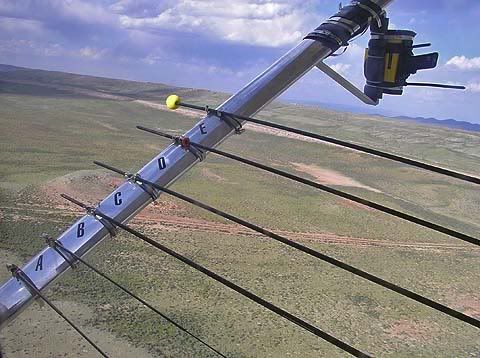
But every plane is built different, so our expert had to measure the exact angles of the struts and the windows in relation to the struts so that the strips would be the right widths when we're flying 300 feet (~100 meters) above the ground. And more importantly, he has to figure out the angles when the plane is flying level, not when it is tilted back on its tail wheel in the hangar.
Lots of complicated math.
Me, I think I would have lifted the tail of the plane up to simulate level flight and simplify the math, but it's not my plane...
Once the placement of the dowels is measured out (to the nearest millimeter), they have to clamped down onto the strut at precisely the right angle to be parallel to the ground when flying.
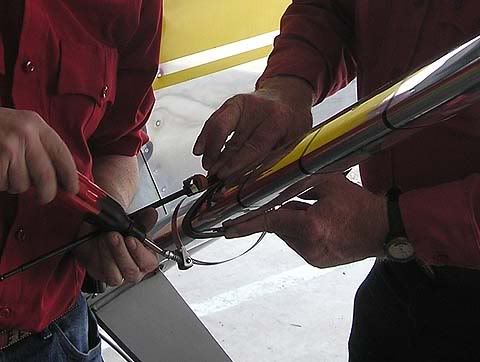
Pain in butt. They had been working on it for over an hour when I got there around 11.
We were still working on it well after four. No breaks.
And for all this to work and mean something, you have to know exactly how high above the ground the plane is at each and every pronghorn you see. 'Cause if you're just 30 feet (~10 meters) too high, your strips will be 10 percent too wide, and your population estimate will be off by 10 percent.
Hence the super expensive laser altimeter also clamped on the wing.
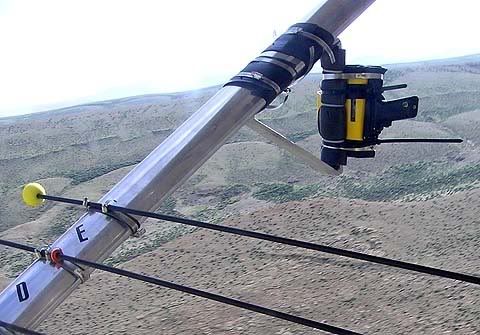
Over two thousand dollars hanging on by two hose clamps and two plastic strip ties.
Again, aligned so it is aimed straight down not in the hangar, but in flight.
The pilot records all your pronghorn observations on a PDA mounted on his yolk.
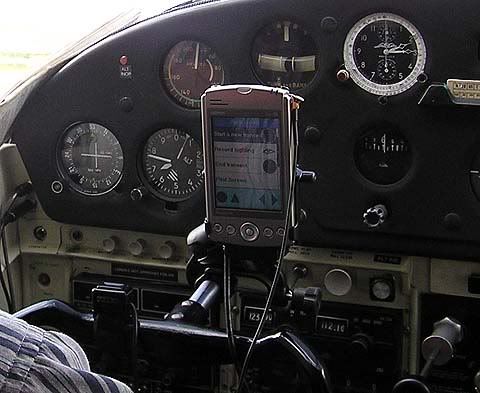
Which is wired to a GPS to give the exact location of the plane at each observation, and bluetoothed to the laser altimeter to give you the exact height.
The two observers (one on each side of the plane) shout out their data using pilot lingo for the band names. A is Alpha, B = Bravo, C = Charlie, D = Delta, and E = Echo.
So, two antelope in the second band would be "Bravo two!".
For some reason, I kept wanting to yell "Epsilon" instead of "Echo".
If it sounds complicated, it is. Took our expert over eight months of doing nothing else to get all the math, hardware and software to work together correctly.
We finally had everything set around five-thirty.
Time for a test flight. Both of the equipment, and the dowels, and the pilot's PDA.
And us observers.
We tried it out in flat country...
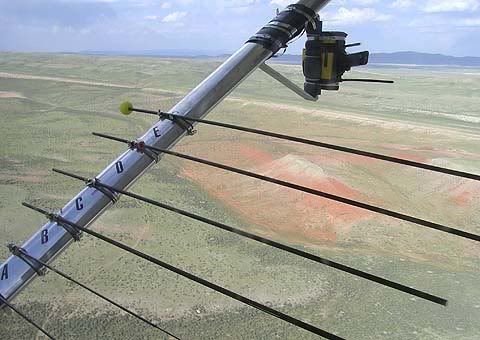
and in the rims.

If these black cattle were pronghorn
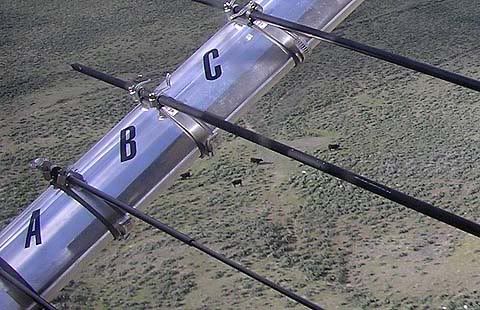
I would have called out "Bravo four!".
But the real thing is a lot harder to see, like this buck bedded with his butt towards us in the rims.

He's a "Charlie one!".
And then, all too soon for my stomach to get queasy, we were headed back to the airport.
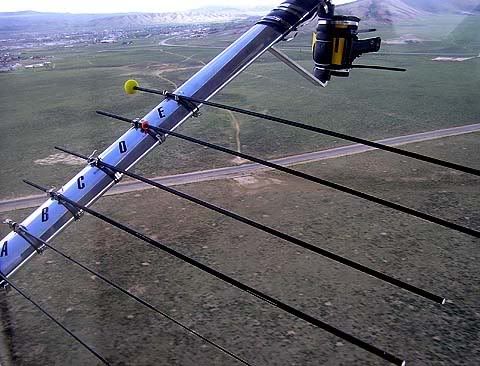
And, as an experiment, enjoy a brief video clip of our flight...
No, you don't normally talk that much on the surveys. Just on the turns, when you don't have to count.
The real thing comes up in a couple weeks.